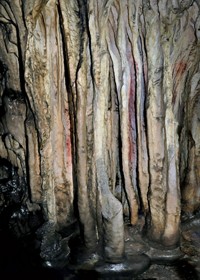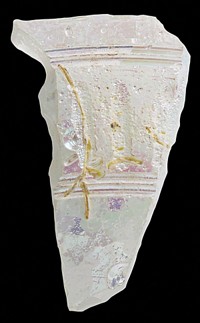Advertisement
Grab your lab coat. Let's get started
Welcome!
Welcome!
Create an account below to get 6 C&EN articles per month, receive newsletters and more - all free.
It seems this is your first time logging in online. Please enter the following information to continue.
As an ACS member you automatically get access to this site. All we need is few more details to create your reading experience.
Not you? Sign in with a different account.
Not you? Sign in with a different account.
ERROR 1
ERROR 1
ERROR 2
ERROR 2
ERROR 2
ERROR 2
ERROR 2
Password and Confirm password must match.
If you have an ACS member number, please enter it here so we can link this account to your membership. (optional)
ERROR 2
ACS values your privacy. By submitting your information, you are gaining access to C&EN and subscribing to our weekly newsletter. We use the information you provide to make your reading experience better, and we will never sell your data to third party members.
Art & Artifacts
Method maps reddish pigment in fossil
Correlation of sulfur and zinc suggests distribution of pheomelanin
by Celia Henry Arnaud
May 26, 2019
| A version of this story appeared in
Volume 97, Issue 21
Two types of melanins are involved in coloration of animal skin and fur. Eumelanin is associated with black and dark brown hues, whereas pheomelanin is associated with lighter reddish-brown shades. Knowing how these pigments are distributed in fossilized soft-tissue remains can help scientists understand what extinct animals looked like. But detecting them in fossilized remains is hard. Scientists have previously detected eumelanin in fossils, but pheomelanin has been more elusive. Now, an international team led by Roy A. Wogelius, a geochemist at the University of Manchester, has found a signature for pheomelanin in a 3-million-year-old fossil of Apodemus atavus, an extinct relative of modern field mice (Nat. Commun. 2019, DOI: 10.1038/s41467-019-10087-2). Scientists know that sulfur in pheomelanin forms complexes with zinc. So in the new study, the researchers went looking for sulfur and zinc in the fossilized mouse. They analyzed the elements using X-ray spectroscopy and mapped the distributions of zinc, phosphorus, and organosulfur using synchrotron X-ray fluorescence imaging. The distributions of zinc and organosulfur were correlated in much the same way as in pheomelanin-containing modern hair and fur, suggesting this prehistoric mouse sported at least some reddish-brown fur. The method should be applicable to other fossils.





Join the conversation
Contact the reporter
Submit a Letter to the Editor for publication
Engage with us on Twitter